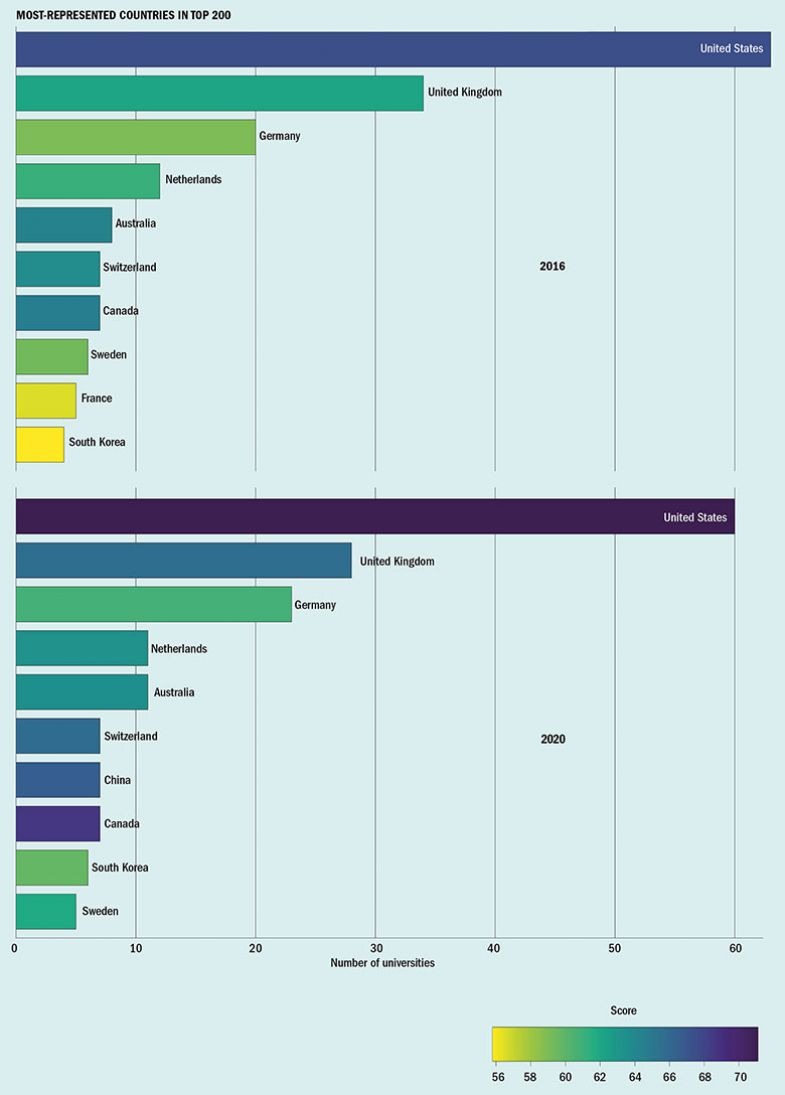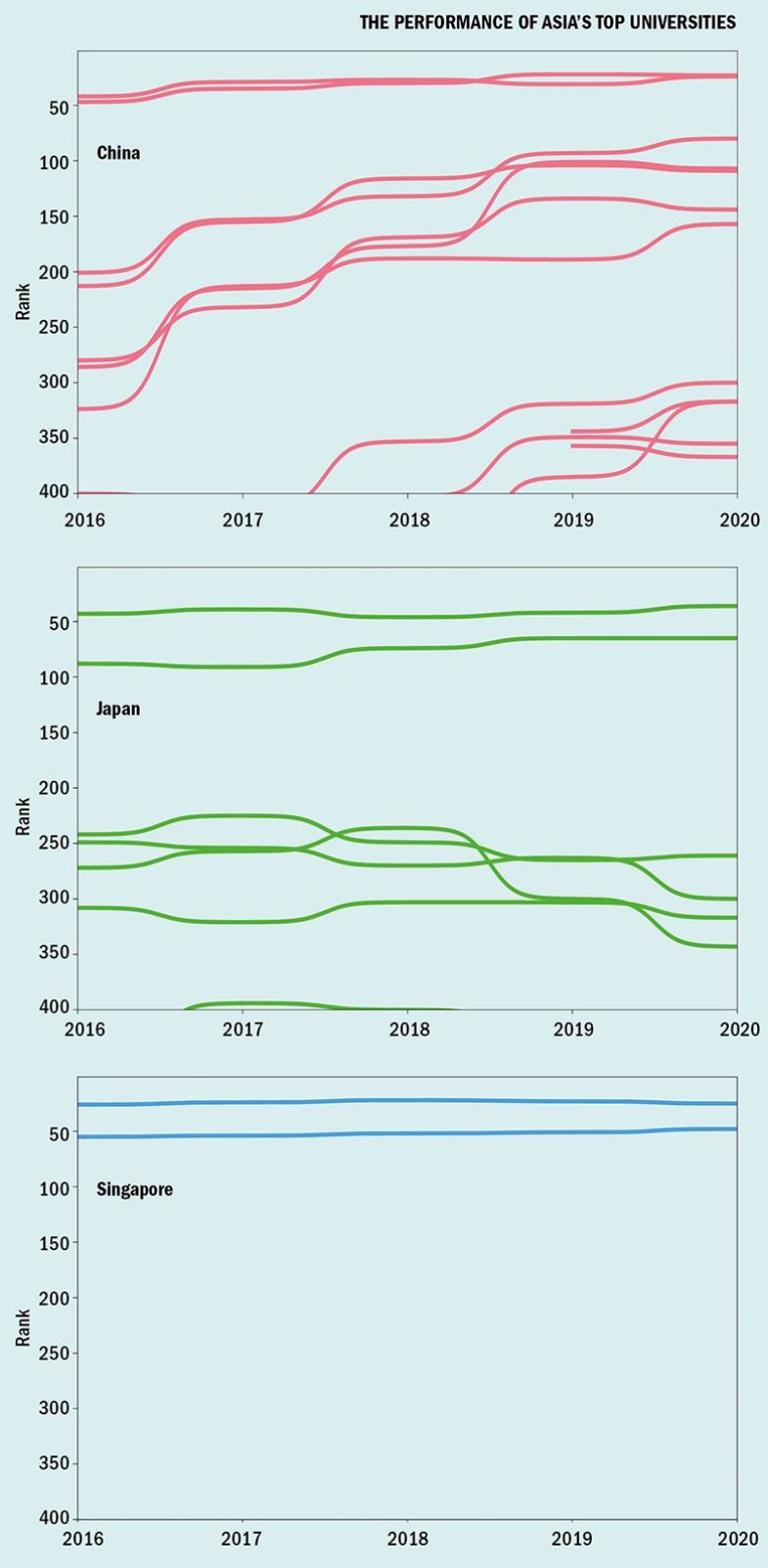Browse the full results of the World University Rankings 2020
The rapid rise of China is clearly visible in these charts, which reveal how the country has improved in terms of representation and individual institutional performance over the past five years.
The bar charts below show the top 10 countries based on the number of universities in the top 200 of the ranking in 2016 and 2020, with the colour representing the average overall score.

China is the only newcomer to this group, ranking joint sixth in 2020 despite not having appeared in the top 10 five years ago. South Korea has also risen, from 10th to ninth, while France has dropped out entirely.
While the US and the UK still dominate the top 200 of the ranking, their share of universities in this group is shrinking. However, the effect of institutions at the bottom of this bracket falling into the lower tiers of the table boosts the countries’ average overall scores in this cohort.
Meanwhile, the three line charts below, which show the positions of the top 400 entrants in China, Japan and Singapore since 2016, demonstrate how the balance of power in the continent is shifting.

While Japan’s top two institutions – the University of Tokyo and Kyoto University – have remained relatively stable over the past five years, the other leading representatives in the country have been steadily declining.
In contrast, the chart on China reveals how the country’s strengthening rankings performance has been driven largely by institutions that were ranked outside the top 200 in 2016. Five Chinese universities that placed between 200th and 350th five years ago now rank among the elite top 200 group, while six others have joined the top 400 in that time.
Singapore cannot boast the same strength in depth as China or Japan, but its two flagship universities both rank very highly and are starting to converge, thanks to the steady improvement of Nanyang Technological University, Singapore.





